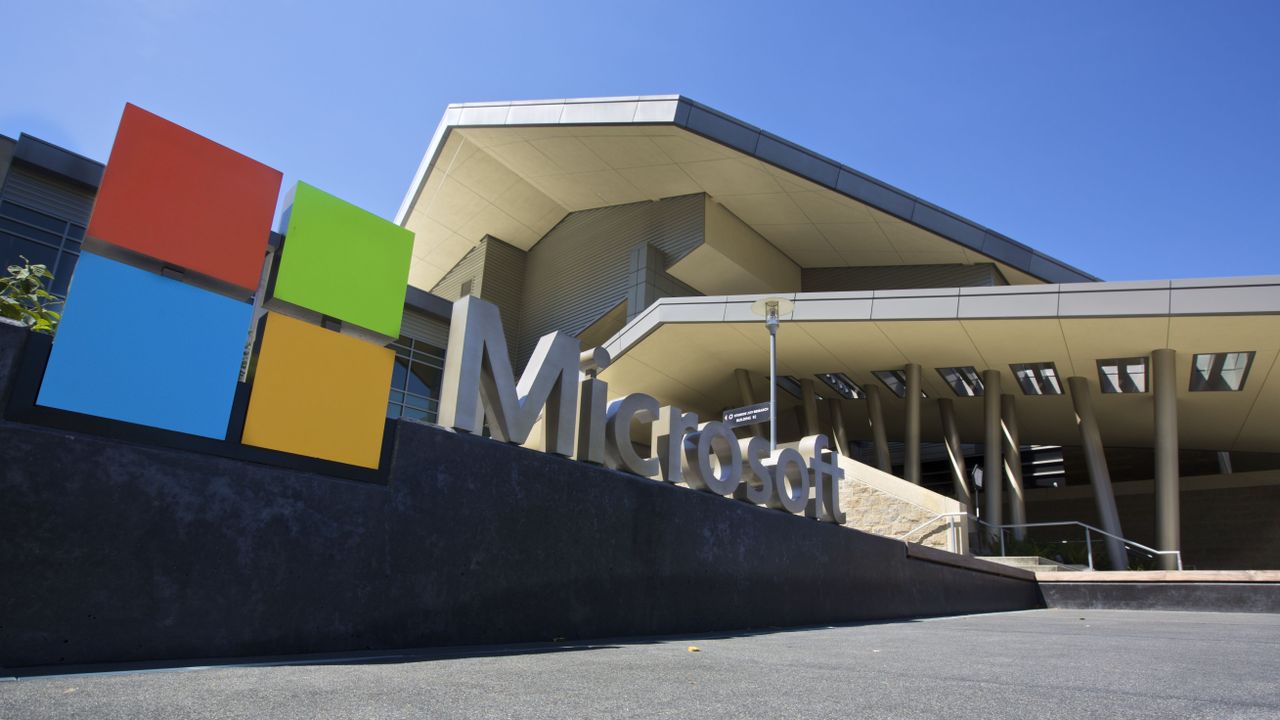Майкрософт не работает? Службы восстанавливаются после серьезного сбоя в Azure, 365 и других платформах (затронуты даже Minecraft и Xbox)

Update: 2025-10-29T16:20:41.586Z Welcome to our live coverage of this outage! We recently observed a sharp spike in reports on the crash tracking system DownDetector, impacting both Microsoft Azure and Microsoft 365.
2025-10-29T16:22:30.793Z The official Azure status page now acknowledges an issue and states it is under investigation. “We are investigating an issue with the Azure Portal, where customers may be experiencing issues accessing the Portal,” the site reads, noting that more information will be provided shortly.
2025-10-29T16:23:50.970Z DownDetector is showing sharp spikes in activity across Microsoft services as this outage continues… (Image courtesy of DownDetector)
2025-10-29T16:26:17.644Z In case you need a reminder, Azure is Microsoft’s cloud platform, so it underpins not just the company’s own services, but those of many clients. Microsoft 365 is its all-in-one office software suite, encompassing popular tools such as Word, Excel, Powerpoint, Teams and many more. Basically, if either has an issue, it’s bad news for everyone…
2025-10-29T16:28:15.739Z Sadly, it appears some major Microsoft customers may also be affected, as DownDetector is showing spikes in downtime for Starbucks, Kroger, Costco.
2025-10-29T16:38:56.533Z It’s not just apps and services affected – it seems even the Microsoft Store is down. Or is Microsoft just pulling an Apple and about to unexpectedly drop a whole raft of new phones? (Image courtesy of DownDetector)
2025-10-29T16:40:23.777Z Reports from Microsoft 365 users continue to pour in, with the DownDetector spike getting bigger and bigger. It’s the start of the working day for many in the central and western US, so all those users logging on at once probably won’t help matters… (Image courtesy of DownDetector)
2025-10-29T16:41:53.985Z Microsoft has also issued an update on the official Azure status page, and it could be good news. “Starting at approximately 16:00 UTC, we experienced DNS issues leading to some service availability degradation. Customers may experience issues accessing the Azure Portal. We have taken actions that are expected to resolve Portal access issues here shortly. We are actively investigating the underlying issue and additional mitigation steps. More information will be provided in 60 minutes or as events warrant.”
2025-10-29T16:46:30.815Z The number of problem reports for Azure appears to be gradually reducing, with DownDetector showing a downturn. Could the outage already be ending? Considering the chaos caused by the recent AWS outage, that would be a big relief for everyone… (Image courtesy of DownDetector)
2025-10-29T16:56:24.957Z Fortunately it seems the numbers are falling across the board – there are still reports of problems on Microsoft 365 and with customers including Starbucks, but they’re nowhere near as high as they were a few minutes ago, so we’re hoping the worst is over. We’re still waiting for another update from Microsoft, however…
2025-10-29T17:01:43.485Z Microsoft has released another update and seems to be working hard on a solution. “Starting at approximately 16:00 UTC, we experienced issues with Azure Front Door resulting in some service availability degradation. Additionally, customers may experience issues accessing the Azure Portal. Customers may attempt to use programmatic methods (PowerShell, CLI, etc.) for access to or to operate their resources if they are not able to access the Portal directly. We have disconnected the Portal from Azure Front Door (AFD) in an attempt to mitigate Portal access issues, and we are continuing to evaluate the state of the underlying services of our AFD infrastructure. Our investigation of contributing factors and additional recovery workflows is ongoing. More information will be provided in 60 minutes or as events warrant.”
2025-10-29T17:16:11.314Z Reports are definitely quietening down – so hopefully this means Microsoft’s work is paying off and everything will be back up and running soon. Another update from Microsoft – and the company thinks it’s found the problem. “We suspect an unintentional configuration change was the triggering event for this issue. We are taking two concurrent actions: halting all changes to AFD services and disabling the problematic route we believe to be tied to this while we simultaneously revert to our last known good state.” “We have disconnected the Portal from Azure Front Door (AFD) in an attempt to mitigate Portal access issues. Customers should be able to access the Azure management portal directly.” “We do not have an ETA for when the rollback will be complete, but we will update this message in 30 minutes or when we have an update.”
2025-10-29T17:30:18.118Z They’ve found the culprit – Microsoft says “We suspect an unintentional configuration change was the triggering event for this issue.” Guess that’s learned the hard way!
2025-10-29T17:45:03.441Z As promised, Microsoft is now saying that the situation is starting to recover… “Customers should be able to access the Azure management portal directly, and while most portal extensions are functioning properly, there may be a small subset of endpoints that may experience issues loading (i.e. Marketplace),” the latest update says
2025-10-29T17:53:02.479Z Still need help? Microsoft has you covered… “While we do not have an ETA yet. customers may consider implementing failover strategies using Azure Traffic Manager to reroute from Azure Front Door to your origin: https://learn.microsoft.com/azure/architecture/guide/networking/global-web-applications/overview “
2025-10-29T18:16:52.550Z Just minutes ago at 2:11 PM ET, the Azure Status page provided the following update: “We have begun deploying our ‘last known good’ configuration. It is expected to be fully deployed in approximately 30 minutes, at which time customers will begin to see initial signs of recovery. Once that has completed, the next phase will be to begin recovering the nodes while we route traffic through those healthy nodes.” And that is the start of good news as Azure deploys its “last known good configuration,” which should hit customs in approximately 30 minutes, at which point the recovery can start. We are monitoring for further status updates.
2025-10-29T18:38:09.452Z While not an update, but recovery is starting though Azure is in the midst of deploying its “last known good configuration” – the Current Impact section on the official status page now only lists Azure Front Door as the issue (Image credit: Future)
2025-10-29T19:00:55.314Z Azure is working to correct it, but it is taking longer than expected. Azure has posted another official update on its status page as of 2:53 PM ET: “We have begun deploying our last known good configuration. This deployment was originally anticipated to complete within 45 minutes; however, due to protective throttles we have in place to protect the AFD service, we are encountering some delays. While progress continues to be made, these precautions are adding to the overall deployment time. Once the deployment has completed, we will begin recovering nodes and routing traffic through healthy nodes to accelerate recovery.” Going on 45 minutes is longer than the anticipated time of recovery; the previous promise was about 30 minutes, but Azure found “protective throttles” to protect the “AFD service.” It acknowledges the delays and said the process continues. No exact timing for completion, but we are monitoring this for further updates.
2025-10-29T19:10:56.832Z Azure’s fix has been submitted and customers may start seeing initial recovery. In a rapid follow-up, at 3:01 PM ET, Azure updated its status page to now reflect that its “last known good configuration” has been submitted and that customer might be starting to see recovery. “We have submitted our ‘last known good’ configuration, and customers may begin to see initial signs of recovery. We are currently recovering nodes and routing traffic through healthy nodes, and as we progress in this workflow, customers will continue to see improvements. Customer configuration changes will be temporarily blocked as we continue our mitigation efforts. We will notify customers once this block has been lifted.” It is good news that measures have been put in place, but now it is somewhat of a waiting game. Azure also notes: “We continue to closely monitor progress and will provide an ETA for full mitigation within the next 20 minutes as we assess recovery across the AFD service.”
2025-10-29T19:22:46.868Z It will take some time In another update, Posted at 3:18 PM ET, Azure says its deployment has been successfully completed, and that “full mitigation” is expected to take place “within the next four hours as we continue to recover nodes”. In simple terms, this means it will take some time and we can expect another update from Azure in 2 hours or sooner if warranted. The successful deployment saw that some people may see an initial recovery, but Azure is still recovering nodes and routing traffic through healthy nodes. Here is the message Full statement: We have begun deploying our ‘last known good’ configuration, which is now successfully completed. Customers may have begun to see initial signs of recovery. We are currently recovering nodes and routing traffic through healthy nodes, and as we progress in this workflow customers will continue to see improvements. Customer configuration changes will be temporarily blocked as we continue our mitigation efforts. We will notify customers once this block has been lifted. Some customers may also experience issues accessing the Azure management portal. disconnected the portal from AFD in an attempt to mitigate those access issues. Customers should now be able to access the Azure portal directly, and while most portal extensions are functioning properly, there may still be intermittent issues loading on a small subset of endpoints (i.e. Marketplace). At this time, we anticipate full mitigation within the next four hours as we continue to recover nodes. We will provide another update on our progress in two hours, or sooner if warranted. While we are seeing signs of recovery, and have rough data. As a temporary fix, customers may also consider implementing failover strategies using Azure Traffic Manager to reroute traffic from Azure Front Door to their origin servers as a temporary measure. Learn more on Azure Front Door Failover Strategies for AFD: https://learn.microsoft.com/en-us/azure/architecture/guide/networking/global-web-applications/overview This message was last updated at 19:19 UTC on 29 October 2025.
2025-10-29T20:06:38.719Z Azure is more specific and updated its previous status message noting that “recovery is expected to occur by 23:20 UTC on 29 October 2025.” That will be 7:20PM ET in New York or 11:20PM in the U.K.. Still, we can expect further updates from Azure in two hours.
2025-10-29T23:56:00.403Z Azure reports its availability is over 98%. We’re checking in shortly after Azure’s promised ETA for recovery (7:20PM ET), and a new status update has arrived. Along with recovery making steady progress, Azure shared: “The AFD service is now operating at an availability level above 98%. While the situation is mitigated for most customers and services or experiencing significant improvement in the impacted regions, we are continuing to work towards final recovery for any remaining impacted customers and services. We have revised the time to resolution, and are currently targeting full mitigation by 00:40 UTC on 30 October 2025, though we will communicate if mitigation is achieved sooner. ” That is quite close to 100%, but Azure estimates full mitigation could take until early morning hours tomorrow. Down Detector reports for affected platforms including Azure and Office 365 are back to reports we see daily, at just over 100.
প্রকাশিত: 2025-10-29 22:20:00
উৎস: www.techradar.com










